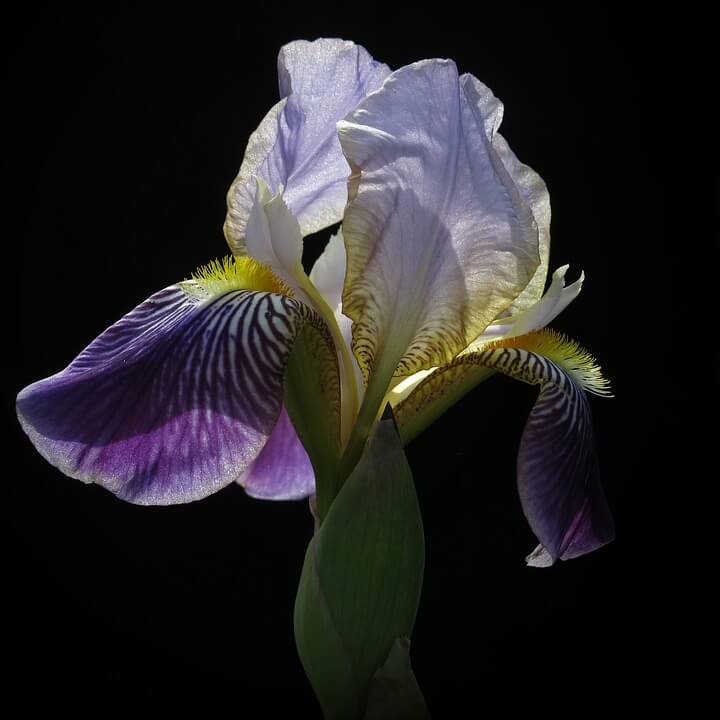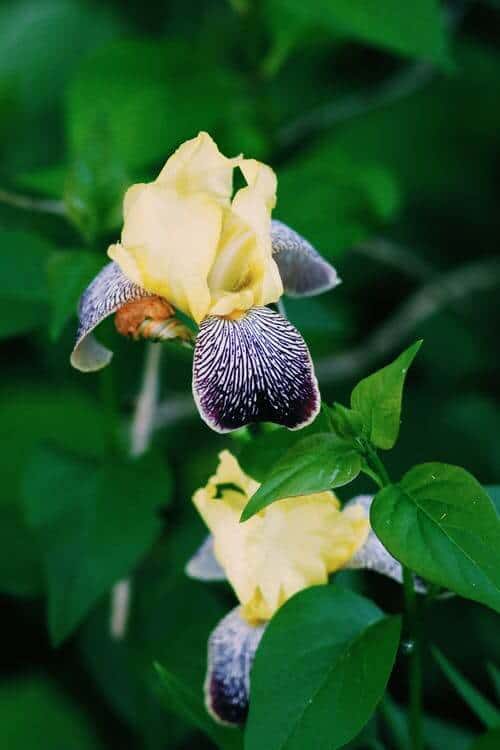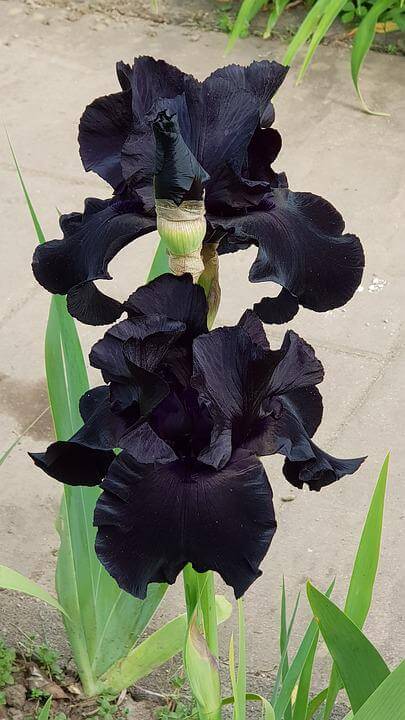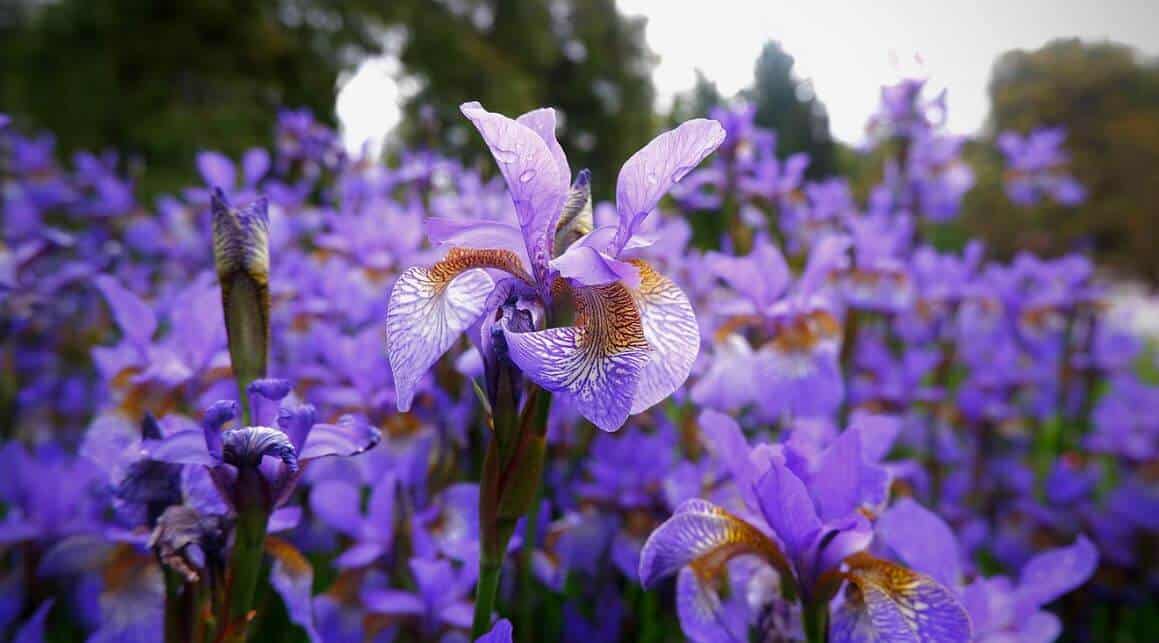Last Updated on January 11, 2023 by a Friendly Gardener
If you want your backyard to bloom with a multitude of colors, it’s time to plant a couple of bearded iris that come in almost all colors, including black! Bearded iris is a plant that’s very easy to plant and grow, but make sure that you plant them in the right conditions that would aid their growth.
Iris, as a plant group is very diverse in terms of the plants it comprises and the bearded iris is an important and one of the most popular categories of the iris. Bearded iris gets its name because of the soft bristles on the low-lying petals of the flower. The bearded iris group is known for its long blooms and the different patterns they come in.
Lots of sunlight and well-moist soil would be the best for the bearded iris in your backyard.
How to Plant Bearded Iris

The growth of the bearded iris stems from its rhizome. If you have bought a single rhizome, immerse it in water for a couple of minutes before you set out to plant it. You could always take a piece of rhizome from a bearded iris and use it to cultivate new plants.
True roots would grow from the underlying surface of the rhizomes and would reach quite a depth. As you plant the rhizomes into the soil, make sure that its top could be seen and the true roots can stem out to the soil underneath.
If you’ve purchased the bearded iris in a pot, be sure to plant it at almost the same depth as they were in the pots. The best season to plant a bearded iris is in spring or autumn. Plant the bearded iris after ensuring that all the conditions for its healthy growth could be properly met, including ample sunlight and spacing.
If you want the blooms to keep coming and also keep your bearded iris alive, it’s of utmost importance to dig the iris and divide its roots every three to four years. You are supposed to cut the rhizomes apart during this procedure.
Although bearded irises are extremely water tolerant, you would need to water your new plants for the initial ten days and then limit the watering to just once a week. Keep in mind that this applies to the new plants only.
The division and transplantation of the bearded iris should be ideally done in late summer or by early fall.
How to Care for Bearded Iris

You may plant the bearded iris for the beautiful blooms they promise, but those blooms would only happen if they are very well taken care of. So no matter what variety of bearded iris you decide to plant in your garden, ensure that you provide all the right conditions for their growth.
Sunlight
The bearded iris plant thrives in plenty of sunlight as they require a minimum of 6 hours of daily sunshine to aid its growth. The sunlight would also help in keeping the rhizomes of the bearded iris dry. So make sure to plant them in an area that receives ample sunlight during all times of the year but don’t forget to give them shade during hotter climates.
Ensuring Spacing between the Plants
Proper air circulation is a must for the healthy development of the bearded iris plant. So when you plant a bunch of them together, make sure that they are planted at least 16 to 18 inches away from one another. Proper spacing is more essential for the tall varieties of the bearded iris than the dwarf ones.
Soil
You will need to prepare a raised bed to plant your bearded iris if the soil in your garden is heavy clayey soil. You could also try to amend the soil and make it light by regularly adding good compost or gypsum.
Fertilizer
A fertilizer, that is low in nitrogen would be the best to opt for your bearded irises. Make sure that you don’t use too much fertilizer as it would propagate foliage growth instead of blooms. Use the low-nitrogen fertilizer only twice a year.
Water
The bearded iris plants are known for their drought-tolerant nature and you needn’t water them at all until a severe drought occurs. But be sure to provide proper drainage to avoid the occurrence of rot damage.
Temperature
Bearded irises are known for their capacity to withstand harsh climatic conditions. They have an extremely hard predisposition when it comes to tolerating temperatures and can withstand temperatures in the range of 95 Fahrenheit to -13 Fahrenheit.
The Lifespan of the Bearded Iris

In a bearded iris, a single rhizome could be credited with multiplying new rhizomes and the lifespan of the iris will depend upon how promptly and correctly the plants are dug out and the roots are divided. It’s ideal to do this every three to four years, and the lifespan of your iris could increase to even 20 years!
Types of Bearded Iris

Based on several parameters such as height, size of the flower, and the time it takes to bloom, the bearded iris could be categorized into six varieties, which are miniature dwarf bearded iris, miniature tall bearded iris, tall bearded iris, standard dwarf bearded iris, intermediate bearded iris, and border bearded iris.
The tall bearded iris category is considered the most popular iris category and is high in demand such as the white and blue colored ‘Silverado’ or the dark maroon colored ‘Superstition’.
The black-bearded iris variants that come in the tall bearded iris category, including ‘Hello Darkness’, ‘Before the Storm’, and ‘Men in Black’, are all very popular among gardening enthusiasts.
The bearded iris varieties that rebloom are also in popular demand such as ‘Sugar Blues’ or ‘Eleanor Roosevelt’. There are a large number of colors in which bearded irises are available including blue, peach, orange, white, rose, etc. The yellow bearded iris and the purple bearded iris are also high in demand.
Final Thoughts
The beauty of the colorful blooms of bearded irises is certainly going to be a great addition to your garden and elevate its appeal. There are hundreds of bearded iris variants you could choose from depending upon your color, size, and flowering preferences. No matter what variety you choose, provide it with the ideal conditions for growth.

